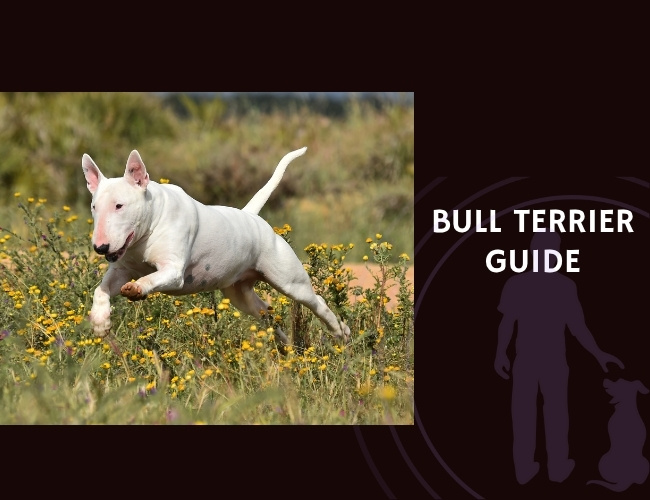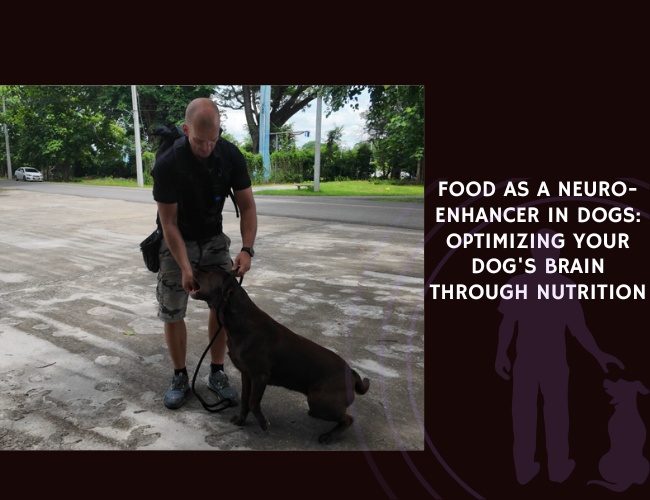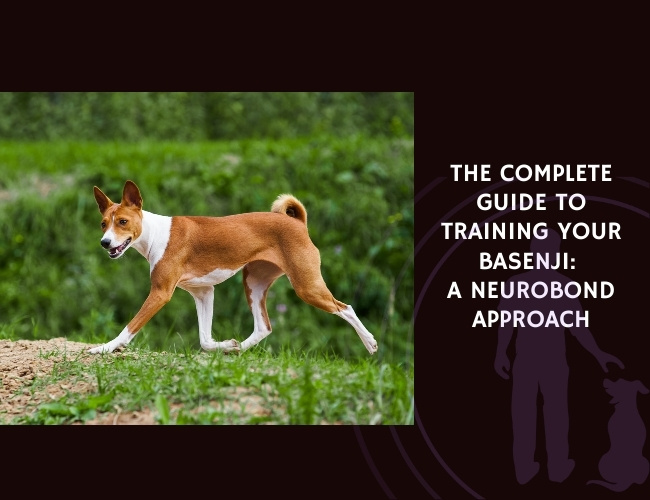Introduction to Bull Terriers
Historical Origins and Evolution
Bull Terriers have a dramatic history that shapes who they are today. Originally bred in the 1800s for bull-baiting, these dogs needed bravery and grit for dangerous tasks. After bull-baiting was banned, breeders shifted their focus. They began selecting for friendlier traits, gradually changing the Bull Terrier from a fierce fighter to a loyal companion. Today’s Bull Terrier stands as a symbol of resilience—its tenacity woven with an affectionate side that makes it a unique addition to any family.
Distinctive Physical Characteristics
Bull Terriers boast a one-of-a-kind look. Their most famous feature is the egg-shaped head, paired with small, triangular eyes that sparkle with mischief. These dogs are sturdy and strong, with deep chests and muscular frames. Their short coat can come in a wide range of colors: pure white, brindle, black, red, and more. Despite their tough build, Bull Terriers are actually quite agile. Their appearance often gets attention in dog parks and on city streets, making them unmistakable among other breeds.
Unique Temperament and Personality
The Bull Terrier’s personality is as distinctive as its looks. This breed walks a fine line between being determined and downright stubborn. Still, they’re just as famous for their clownish antics and love of play. You’ll often see them bouncing around, chasing toys, or greeting you with enthusiastic tail wags.
However, their background means they have a strong prey drive and can be assertive. Proper socialization makes a huge difference. With early training, Bull Terriers become devoted, social family dogs. They’re sensitive to their humans’ moods and thrive when included in family activities. Spend a little time with a Bull Terrier, and you’ll see their unique blend of cheekiness, courage, and affection—a mix that sets them apart from the pack.
Let’s continue exploring what really makes up their core character and everyday behaviors.
Character and Behavior
The Dual Personality: Tenacity Meets Playfulness
Bull Terriers are known for an unforgettable personality that’s a mix of determination and fun. Their roots as bull-baiting dogs gave them a natural stubborn streak and plenty of grit. These dogs don’t back down when they set their minds to something, and that determination often shines when they’re solving problems or playing tug-of-war. At the same time, thanks to careful and selective breeding, Bull Terriers are also bursting with playful, clownish energy. If you’ve ever met one, you know they love to make people laugh with silly antics and goofy facial expressions. This dual nature means Bull Terriers are both independent thinkers and delightful companions.
Typical Behaviors: Clowns With Energy to Burn
You’ll quickly notice a Bull Terrier’s exuberance during playtime. Whether they’re bouncing off the furniture or zooming around the backyard, physical energy is part of daily life. These dogs are not couch potatoes! Their “clownishness” is legendary—they’ll invent new games, chase their tails, or carry their favorite toy everywhere. But with that fun side comes a strong prey drive, a holdover from their ancestors. This drive makes it important to supervise interactions with other animals and channel their energy into positive outlets.
Possible Risk Behaviors and Why Early Intervention Matters
While they’re loving and devoted, Bull Terriers can show risk behaviors if their needs aren’t met. Without early and consistent guidance, you might see:
- Obsessive object fixation, like constant chewing on a single toy
- Compulsive tail chasing
- Dog-directed aggression, especially if under-socialized
These aren’t “bad” dogs—they’re just following instincts that need direction. Early intervention is key. Socialization from puppyhood shapes a well-adjusted adult. Consistent routines, boundaries, and plenty of positive interaction prevent many issues from developing. Remember, Bull Terriers are sensitive to your mood and thrive when they feel part of the family.
Understanding these unique traits helps you provide the informative, professional, and supportive care these energetic companions deserve. The next step to a happy, balanced Bull Terrier is knowing how—and why—socialization and training make such a big difference.
Socialization and Training
Importance of Early Socialization
Bull Terriers need early and consistent socialization to become friendly and balanced adult dogs. Introducing them to a variety of people, pets, sounds, and places helps curb their natural tendencies toward impulsivity or strong reactions. Starting socialization in puppyhood is key—puppy classes, meeting gentle animals, and safe public outings go a long way. These positive early experiences help prevent risk behaviors such as obsessive chewing, tail chasing, or aggression toward other dogs. Remember, we are here to help you give your Bull Terrier the best head start! 🐾
Positive Reinforcement Methods
Training Bull Terriers requires patience, structure, and a bit of creativity. They respond best to positive reinforcement, which means rewarding good behavior with treats, toys, or praise instead of using punishment. Because Bull Terriers are intelligent but stubborn, consistency is crucial. Frequent rewards for the right choices build confidence and trust between you and your dog. Avoid scolding or harsh corrections; these usually backfire, leading to frustration or disinterest.
Some tips for effective training:
- Use high-value treats or special toys as rewards.
- Keep your voice upbeat and encouraging.
- Praise often to build positive habits.
- Always end training on a successful note for extra motivation.
Managing Intensity with Short Sessions
Bull Terriers are energetic and can quickly lose interest if training drags on. Short, engaging sessions are key—aim for 5-10 minutes at a time. This keeps your dog focused and reduces the risk of boredom or stubbornness. Work on basic cues like “sit,” “stay,” and “come,” then add fun tasks that channel their playfulness, such as fetch or agility tricks. Rotating activities also helps manage their boisterous energy and keeps learning fresh.
Supporting your Bull Terrier’s growth through these methods forms a strong foundation for good behavior and a loving bond. By focusing on socialization, rewards, and enjoyable routines, you’re helping your dog become an awesome companion.
Next, we’ll help you learn how to meet their exercise and activity needs so your Bull Terrier stays healthy and happy.

Exercise and Mental Stimulation
Meeting Daily Activity Needs
Bull Terriers are known for their boundless energy and physical exuberance. To keep them healthy and happy, you should plan on providing 60-90 minutes of exercise each day. This can include brisk walks, play sessions in a secure yard, or interactive games like fetch. Structured activity not only tires them out but also minimizes unwanted behaviors. Without enough movement, Bull Terriers might become bored and act out destructively. A routine mix of activities is key to their overall well-being. 🏃♂️
Channeling Energy Through Canine Sports
These muscular, intelligent dogs thrive on activities that challenge both their bodies and minds. Canine sports are a great fit. Consider agility training, where they jump over obstacles and race through tunnels. Nosework taps into their sharp sense of smell and keeps them mentally engaged. Even joining organized flyball teams can give them a healthy outlet for their drive to chase and retrieve. The right sport can turn that natural tenacity into focused, positive fun.
Mental Stimulation to Beat Boredom
Exercise is essential, but it’s just as important to exercise a Bull Terrier’s mind. Mental stimulation keeps their clever brains working. Try puzzle toys, food-dispensing balls, or hide-and-seek games around the house. Rotate different toys often so they always find something new and exciting.
Training short, enjoyable sessions using positive reinforcement is a productive way to keep them learning. These sessions build good habits and stop boredom from turning into trouble, like chewing or digging. Keeping activities varied can go a long way in supporting their emotional health. 🧩
Preventing Destructive Behaviors
When Bull Terriers don’t get enough physical or mental activity, they may show behaviors like compulsive chewing or tail chasing. Consistent exercise and brain games help prevent these problems. Always supervise play to keep them safe and maintain boundaries. Your dedication to meeting their needs will help them feel secure and balanced.
Understanding how to keep your Bull Terrier active supports a harmonious and healthy home. Our mission is to provide you with the best information possible, so you can confidently support your playful companion every day.
Bold. Loyal. Unbreakable.
A fighter’s past, a companion’s heart The Bull Terrier’s story begins in the gritty streets of 19th-century England, bred for tenacity and toughness during the cruel era of bull-baiting. But when blood sports faded into history, so too did the Bull Terrier’s role as a fighter.
Power in a unique package The Bull Terrier turns heads everywhere it goes. Its iconic egg-shaped head and piercing triangular eyes give it a look that’s unmistakable—and often misunderstood. Beneath the stocky, muscular frame lies agility and finesse, not brute force.
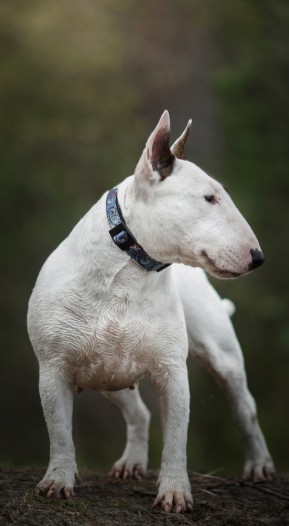
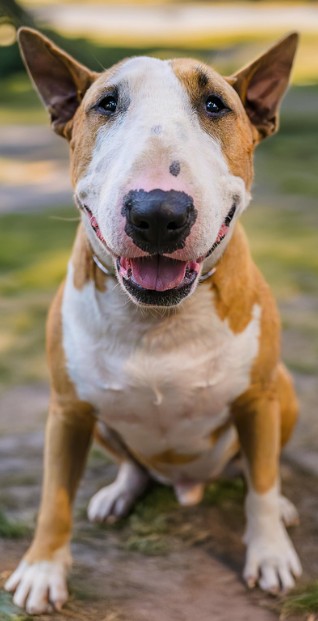
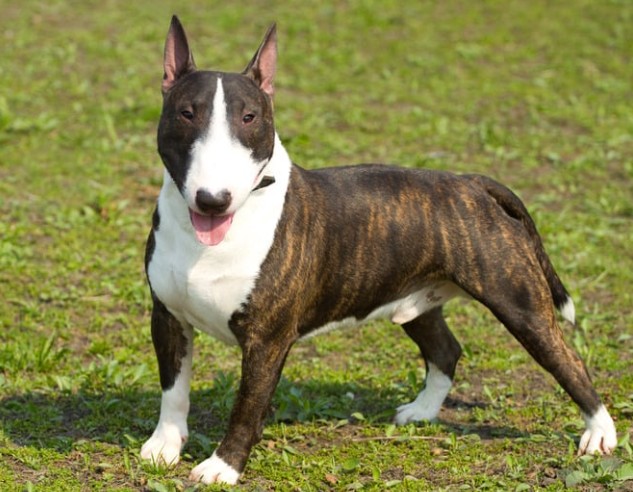
Clownish, strong-willed, and deeply devoted There’s no mistaking a Bull Terrier’s personality. They’re goofy, determined, and packed with enthusiasm. This breed doesn’t follow orders blindly—it thinks, decides, and then plays by its own rules.
Nutritional Requirements
Ensuring a Balanced Diet
Providing your Bull Terrier with the right nutrition is essential for a healthy, happy life. These energetic, muscular dogs thrive on a diet rich in high-quality protein to support their build and strength. Look for foods where real meat, like chicken or beef, is the first ingredient. Moderate levels of fat will provide necessary energy, while complex carbohydrates such as brown rice or sweet potato will keep your dog fueled throughout the day.
Balanced macronutrient ratios are key:
- Protein should make up a solid portion of the meal to preserve muscle mass.
- Fats help give your Bull Terrier stamina for their playful lifestyle.
- Complex carbs maintain consistent energy and prevent spikes and crashes.
Stick to feeding adult Bull Terriers approximately 1.5-2.5% of their body weight daily. Puppies will need more for healthy growth. 🍽️
Managing Skin Allergies and Special Diets
Bull Terriers are known for having sensitive skin. Allergies are not uncommon. Signs may include itching, redness, or recurring skin infections. Diet can help:
- Choose high-quality, limited-ingredient, or hypoallergenic foods.
- Sometimes, foods with novel proteins (like lamb or duck) make a difference.
- Omega-3 fatty acids (such as those from fish oil) are excellent for skin and joint health.
Before making changes to your dog’s diet, especially if you suspect allergies, we are here to help you remember—a veterinarian’s advice is crucial for finding the best food, and they may suggest prescription diets if needed.
Establishing Feeding Routines
A professional feeding routine can help prevent health issues. Bull Terriers should eat in a calm environment. Using a slow-feeder bowl helps reduce the risk of gulping and bloating. Offer 2–3 smaller meals daily instead of one large feeding. This approach can prevent obesity and also help with digestion.
For extra support, keep treats to less than 10% of daily intake. The right nutritional habits can prevent obesity, which reduces the risk of orthopedic and cardiac concerns later in life.
Setting up healthy routines ensures your Bull Terrier thrives not just today, but every day of their unique journey.
Health Concerns and Management
Bull Terriers are delightful dogs, but they come with some important health concerns. Our mission is to provide you with the best information possible so you can help your Bull Terrier lead a happy, healthy life. Staying informed—plus working closely with a trusted veterinarian—goes a long way toward keeping your pup in great shape. 🩺
Hereditary Conditions
Bull Terriers have a few hereditary issues to watch for. The two most notable are nephritis (a kidney disease) and congenital deafness.
- Hereditary nephritis can shorten a dog’s life if not caught early. Regular urine testing and screenings, especially if your Bull Terrier’s family has a history of kidney problems, are a must.
- Congenital deafness is more common in Bull Terriers with white coats. Responsible breeders use BAER (Brainstem Auditory Evoked Response) testing to spot this condition early so owners can adapt training and care as needed.
Skin Disorders
Skin allergies are frequent, with issues ranging from atopic dermatitis to demodicosis (a skin mite problem). You may notice signs like itching, redness, or hair loss. Sometimes, a special diet—like hypoallergenic or limited-ingredient food—makes a big difference. Zinc-responsive skin issues and acral lick granulomas (sores from excessive licking) are also seen in this breed. If your Bull Terrier starts scratching or licking too much, a vet visit is wise for diagnosis and a care plan.
Orthopedic Issues
This breed is known for energy and playfulness, but their joint health needs close attention. Patellar luxation (kneecap slipping) and other orthopedic concerns can limit movement and comfort. Fatty acids like Omega-3s are often recommended to boost joint health. Maintaining a healthy weight through diet and exercise helps prevent unnecessary stress on joints.
Preventative Care and Vet Checkups
Prevention and early detection are key in health management. Schedule regular veterinary visits—a minimum of once a year, but twice is even better, especially as your dog ages. Your vet will recommend blood tests, urine checks, and heart evaluations. Early treatment leads to better outcomes and a longer, happier life.
Bull Terriers can live 11-14 years with the right care, diet, and exercise. We are here to help you feel confident and supported in your Bull Terrier’s health journey. 💙
Now that you know the essentials of caring for their health, you’ll be equipped for the daily routines and home lifestyle that help these amazing dogs thrive.

Living with a Bull Terrier
Creating a Happy Home
Making your home Bull Terrier-friendly is essential for their health and happiness. These dogs thrive as indoor companions and should not be kept outside only. Their short coat makes them sensitive to both the cold and heat, so always provide a safe, comfortable place indoors. At the same time, secure outdoor spaces—like a fenced yard—are important for exercise and mental stimulation. Ensure all fences are sturdy, as Bull Terriers are strong and may attempt to dig under or jump over weak spots.
A mix of indoor relaxation and outdoor adventure keeps your Bull Terrier in top shape—both physically and emotionally. Avoid leaving your dog unsupervised outside for long stretches, especially in extreme weather.
Family and Other Pets
Bull Terriers are known for building strong bonds with their humans. They are typically very affectionate with adults and older children, enjoying plenty of playtime and cuddles. Their physical exuberance does mean that supervised interactions are best with young kids to avoid accidental bumps or tumbles.
When it comes to other pets, a Bull Terrier’s history shines through. They have a high prey drive, so careful introductions and firm boundaries are necessary—especially with small animals like rabbits or guinea pigs. If you plan for your Bull Terrier to share space with another dog, choose a companion that matches their energy and play style. Early socialization is crucial and can help foster friendship rather than rivalry.
Keep in mind that some Bull Terriers may do best as the only pet, while others can adapt with the right training and gradual introductions.
Companionship and Separation Anxiety
Bull Terriers live for human companionship. They are happiest when involved in family activities and can suffer if left alone for long periods. Separation anxiety may show up as chewing, barking, or restlessness.
To prevent this, create a predictable routine and build positive associations with your departures. Provide toys, interactive puzzles, and, if possible, consider a pet sitter or doggy daycare if you’re frequently away. Meeting their social needs is just as important as physical care—your Bull Terrier will thank you with endless loyalty and affection 🐾.
A supportive approach to daily life helps your Bull Terrier flourish, ensuring a bond that lasts for years.
Is a Bull Terrier Right for You?
Who Thrives with a Bull Terrier?
Bull Terriers are not typical “starter” dogs. If you’ve never owned a strong-willed, high-energy breed before, this may not be the best fit. Their tenacious nature and playful stubbornness can be a joy for experienced owners, but a real challenge for first-timers. They need confident guidance—someone who understands canine behavior and is comfortable setting boundaries.
Experienced dog owners are best suited for this breed. Bull Terriers will test limits and get bored quickly. If you’re seeking a breed eager to please and always ready to follow commands, you might find the Bull Terrier’s independent streak frustrating. Patience and consistency go a long way, and a professional, supportive attitude makes a real difference.
Assessing Your Lifestyle 🐾
Before welcoming a Bull Terrier into your home, ask yourself:
- Do you have at least 60-90 minutes a day for vigorous exercise and play?
- Can you commit to ongoing training using positive reinforcement?
- Is someone home most of the time, or do you have access to doggy daycare?
- Can your home provide both safe indoor comfort and a secure outdoor play area?
- Are you prepared for the emotional and time needs of a dog prone to separation anxiety?
A Bull Terrier thrives in a stable, supportive environment. They bond deeply with their humans and don’t do well home alone for long hours. If your work keeps you away most of the day, consider other options for companionship.
Realistic Commitments and Expectations
Bringing a Bull Terrier into your life means accepting both the challenges and the joys. You can expect:
- Lively play and daily routines filled with exuberance
- Training that requires extra patience
- The possibility of dealing with health issues like skin allergies and orthopedic concerns
- The need for careful introductions with other pets, especially small animals
These dogs reward commitment with loyalty, affection, and endless entertainment. If you’re ready for responsibility and capable of offering a loving, structured home, a Bull Terrier might be the right companion for you. 🐶
With an understanding approach and a bit of Bull Terrier humor, the journey is always rewarding and full of surprises.
Conclusion: The Bull Terrier Experience
Bringing It All Together
Owning a Bull Terrier is truly a unique adventure, blending challenges with countless rewards. If you have followed their story from bull-baiting origins to beloved family companions, you know these dogs are anything but ordinary. They are tenacious and bold, yet deeply loving and playful. The key to success is preparation, understanding, and lots of heart.
Key Considerations for Success
To thrive with a Bull Terrier, you will need:
- Early and ongoing socialization
- Consistent, positive training routines
- Plenty of physical activity and mental enrichment
- Patience and understanding for their stubborn streak
- Attention to health through nutrition and regular vet checkups
This breed does best with experienced owners who are ready for their high energy and intensity. Regular exercise (60-90 minutes daily), mental challenges, and loving companionship are all must-haves. Living with a Bull Terrier means adapting your home and routine to meet their needs, especially if you have children or other pets. Small pets may not be ideal, but with structured training, some homes make it work.
The Joys and the Challenges
Bull Terriers often act like the clowns of the canine world. Their exuberance and sense of humor light up any room, creating moments of laughter and joy 😄. Yet, they can be strong-willed and need steady guidance. Without structure or enough stimulation, boredom may lead to destructive behaviors. Proactive socialization, patient training, and lots of love go a long way.
Support and Resources
We are here to help! Our mission is to provide you with the best information possible. For extra guidance, reach out to breed clubs, Bull Terrier rescue organizations, and your local veterinarian. Online forums and professional trainers are great places to connect with other owners and get advice on everything from behavior to health concerns.
Bull Terriers ask a lot of their owners, but they return it with fierce loyalty, comic relief, and unconditional love. If you are ready for the commitment, a Bull Terrier makes for a remarkable, unforgettable companion. 🐾

